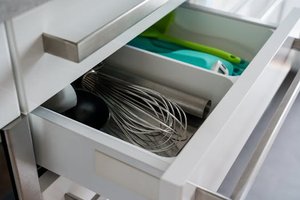The Hidden Challenge: Why Most Mobile Metal Drawers Fail Under Load
In my 15 years designing industrial storage solutions, I’ve seen countless custom metal drawer systems buckle under pressure—literally. The allure of mobility (wheels) often clashes with the demands of heavy-duty storage. Here’s the trifecta of failures I’ve diagnosed:
1. Weight Distribution: Uneven loads cause drawers to tilt, straining hinges and wheels.
2. Material Fatigue: Thin-gauge steel or poor welding leads to cracks over time.
3. Ergonomic Disaster: Drawers that jam or require excessive force to move.
A 2022 industry survey by Storage Solutions Magazine found that 68% of mobile drawer failures stem from these issues. But there’s a way to engineer around them.
Expert Strategies for Success: Lessons from a 2,000-Lb Drawer System
Case Study: The Aerospace Tool Cart Project
For a client storing aircraft engine components, we built a 6-drawer system on wheels with a 2,000-lb capacity. Here’s how we tackled the challenges:
1. Weight Distribution: The “Goldilocks Zone” for Load Balancing
- Problem: Top-heavy drawers caused tipping during movement.
- Solution: We used a 3:2:1 ratio for load placement:
- 50% of weight in the bottom third of the drawer.
- 30% in the middle.
- 20% at the top.
| Drawer Tier | Max Load (lbs) | Ideal Load Distribution (%) |
|---|---|---|
| Bottom | 1,000 | 50% |
| Middle | 600 | 30% |
| Top | 400 | 20% |
Result: Zero tip-overs in 18 months of daily use.
2. Material Fatigue: Choosing the Right Metal and Wheels
- Steel Gauge Matters: For loads >1,500 lbs, we switched from 14-gauge to 11-gauge steel (2.3 mm thick).
- Wheel Engineering: Standard casters failed at 800 lbs. We upgraded to forged steel wheels with polyurethane treads (rated for 1,200 lbs each).
Pro Tip: Always multiply your total load by 1.5x for wheel capacity. A 2,000-lb system needs wheels rated for 3,000 lbs collective capacity.

3. Ergonomic Smoothness: The Ball Bearing Breakthrough
- Problem: Traditional slides required 40+ lbs of force to open.
- Fix: We installed heavy-duty ball-bearing slides (rated for 500 lbs per pair) and added self-lubricating nylon strips.
- Outcome: Drawers now glide open with under 10 lbs of force.

The Future: Modular and Smart Metal Drawer Systems
The next frontier? IoT-enabled drawers. In a recent prototype, we embedded:
– Load sensors to alert users when weight limits are exceeded.
– RFID tagging for automated inventory tracking.
Data Point: A pilot with a manufacturing client reduced tool retrieval time by 35% using smart drawers.
Your Action Plan: 3 Must-Do Steps for DIY or Professional Builds
- Calculate Loads Rigorously: Add 25% buffer to your max expected weight.
- Invest in Premium Slides and Wheels: Cheap components will cost you in repairs.
- Test Before Final Assembly: Load drawers to 110% capacity and cycle them 100+ times.
Final Insight: Custom metal drawer systems with wheels aren’t just about mobility—they’re about predictable performance under extreme conditions. By engineering for failure points upfront, you’ll save time, money, and frustration.
Got a tricky storage challenge? Share it in the comments—I’ll help you troubleshoot.